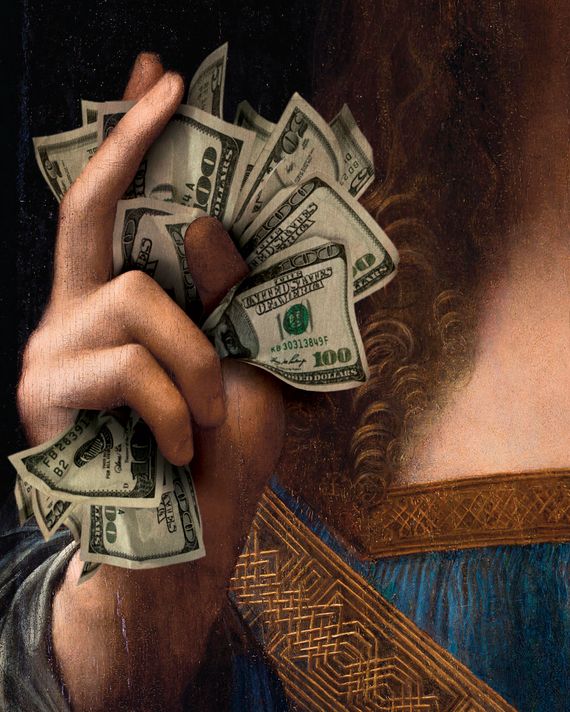by MATTHEW SHAER

PHOTO/The Picture Art Collection/Alamy Stock Photo/Getty Image
In 2005, an unusual painting appeared on the website of the New Orleans Auction Gallery, a small operation headquartered on the banks of the Mississippi River. Twenty-six inches tall and 18 and a half inches wide, the painting depicted Christ in Renaissance-era robes, one hand raised in benediction, the other cupping a diaphanous sphere. “After Leonardo da Vinci (Italian 1452–1519),” read the description. “Christ Salvator Mundi. Oil on cradled panel.”
Among the people to click on the listing for Lot 664 was a Rockland County art speculator named Alexander Parish. Parish has spent his entire career in the art world, first as an assistant, later as an adviser to a major European gallery, and now as what’s known as a picker — a dealer who purchases art from minor auction houses and antiques sales and resells it to wealthy clients at a profit. “A major part of what I do,” Parish told me, “is educated gambling. You get a good feeling about a piece of art, and you place a bet that you know more about it than the auctioneer does.”
Parish felt very good about Lot 664. In fact, although he had only a few postage-stamp-size JPEGS to work with, he thought he might be looking at a piece by a student of Leonardo’s — perhaps the Milanese painter Bernardino Luini. That same afternoon, he sent a link to his friend Robert Simon, the owner of an old-master gallery on the Upper East Side, who has a doctorate in art history from Columbia University with a specialty in the art of the Renaissance.
“My first reaction was that it was a very intriguing painting,” Simon recalled. As he knew, the original Salvator Mundi, painted by Leonardo around 1500, possibly for the French king Louis XII, had been one of da Vinci’s most copied works — dozens of replicas hang in museums around the world, but the original had been lost to history. It seemed possible that another period copy dating to the Renaissance would exist. Simon and Parish agreed to invest in the painting together, with a bid ceiling of $10,000; Parish would handle the bidding via phone. “My memory of the auction is that I just sat there waiting for the price to go up,” Parish said. “But it became apparent that no one else was interested.” His winning bid came in at $1,000.
Today, of course, the contents of Lot 664 are worth far more than that: The picture has since sold once for $127.5?million and again, in a record-setting auction at Christie’s, for close to half a billion dollars. It has been held up as the “male Mona Lisa” and the “Holy Grail of old-master paintings” and derided by this magazine’s art critic, Jerry Saltz, as a “two-dimensional ersatz dashboard Jesus.” It has been owned by a Swiss tycoon, a Russian oligarch, and Saudi royalty. Along the way, it has come to illustrate how the interests of dealers, museums, auction houses, and the global rich can conspire to build a masterpiece out of a painting of patchwork provenance and hotly debated authorship. Its rise is both an astonishing tale of restoration and historical sleuthing and — for those inclined to see the world less romantically — a parable of highbrow greed, P.?T. Barnum–style salesmanship, and reputation laundering.
Vulture for more